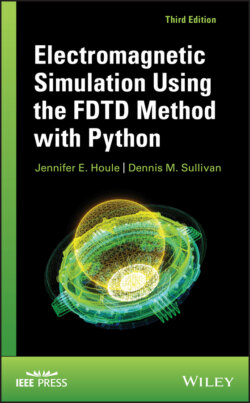Читать книгу Electromagnetic Simulation Using the FDTD Method with Python - Dennis M. Sullivan - Страница 21
1.6 DETERMINING CELL SIZE
ОглавлениеChoosing the cell size to be used in an FDTD formulation is similar to any approximation procedure: Enough sampling points must be taken to ensure that an adequate representation is made. The number of points per wavelength is dependent on many factors (3, 4). However, a good rule of thumb is 10 points per wavelength. Experience has shown this to be adequate, with inaccuracies appearing as soon as the sampling drops below this rate.
Naturally, we must use a worst‐case scenario. In general, this will involve looking at the highest frequencies we are simulating and determining the corresponding wavelength. For instance, suppose we are running simulations with 400 MHz. In free space, EM energy will propagate at the wavelength
(1.18)
If we were only simulating free space, we would choose
However, if we are simulating EM propagation in biological tissues, for instance, we must look at the wavelength in the tissue with the highest dielectric constant, because this will have the corresponding shortest wavelength. For instance, muscle has a relative dielectric constant of about 50 at 400 MHz, so
In this case, we would probably select a cell size of 1 cm.
